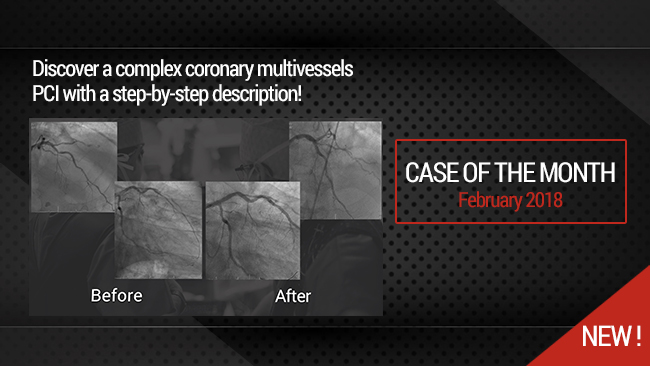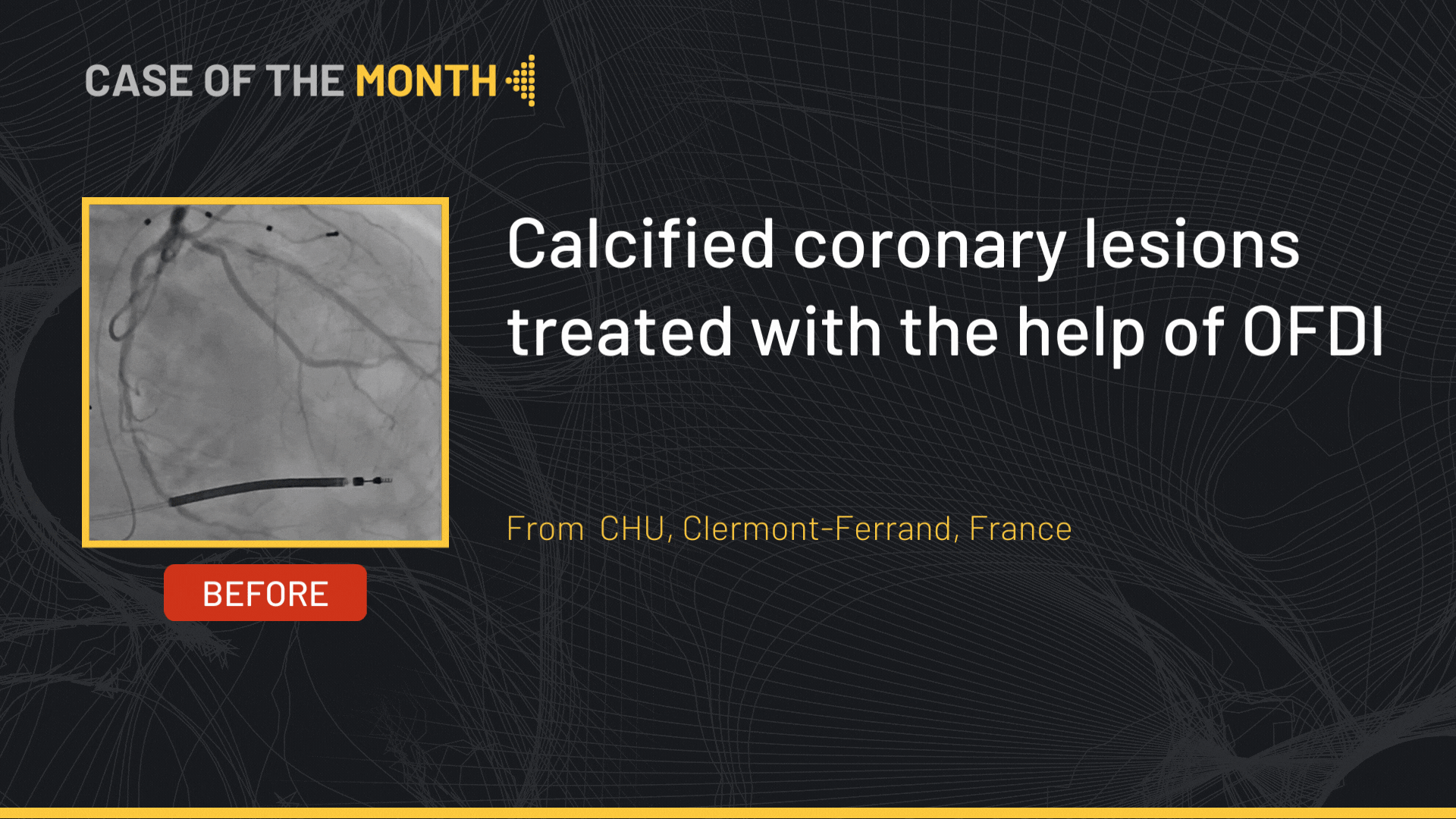×
It looks like you're using an obsolete version of internet explorer. Internet explorer is no longer supported by Microsoft since the end of 2015. We invite you to use a newer browser such as Firefox, Google Chrome or Microsoft Edge.
Diffuse coronary multivessels disease. Complex PCI treatment
Case of the Month: February 2018
This 20 minutes didactic procedure concerns a 64 years old male presenting with anterior wall proven ischemia with diffuse coronary multivessels disease: several calcified mid LAD lesions, first diagonal and left CX lesions, the SYNTAX Score was 14.
These lesions were treated in the same session by multi-instrumental PCI.
Protocol
- OptiRAY® (Ioversol)
- Concentration 300 mgI/ml
- Flow rate: 3.5 mL/ s
- Volume: 165 mL
- Total exposure : 1.3 Gy
- Exposure time: 38 minutes
- 7.5 images / slow dose Philips
- 50 images mostly by fluoroscopy
Step-by-Step Procedure
- Wiring the distal LAD with a workhorse guidewire.
- Predilatation of distal and proximal LAD lesions with a NC balloon 1.5x15mm.
- Changing to Rotawire Floppy in the LAD using Finecross microcatheter and trapping technique.
- Rotational atherectomy using 1.5mm Burr.
- Exchanging the Rotawire to a workhorse guidewire using Aquaplane technique.
- Stenting of the distal and proximal LAD lesions using Guiding catheter extension to improve support.
- Predilatation of the proximal LAD lesion with Scoring balloon and stenting.
- Stenting of the LCX lesion.
Learning Points
- How to approach patients with multivessels coronary artery disease.
- Microcatheter using for Rotawire placing in tortuous and calcified lesions.
- Complex lesions preparation with Rotational atherectomy .
- Scoring balloon predilatation as complementary technique for optimal preparation after Rotational atherectomy.
- Usefullness of guiding catheter extension to improve backup support and device delivery.
- Contrast medium volume control during multivessels PCI.
Biobliography
-
State of the art: evolving concepts in the treatment of heavily calcified and undilatable coronary stenoses - from debulking to plaque modification, a 40-year-long journey - Article
Authors: Emanuele BarbatoPublication: 2017 Aug 25;13(6):696-705. doi: 10.4244/EIJ-D-17-00473.
-
Radial Versus Femoral Access for Rotational Atherectomy: A UK Observational Study of 8622 Patients - Article
Authors: Watt J, Austin D, Mackay D, Nolan J, Oldroyd KG.
Publication: 2017 Dec;10(12). pii: e005311. doi: 10.1161/CIRCINTERVENTIONS.117.005311.
-
Therapeutic effect of rotational atherectomy with implantation of drug eluting stent in heavily coronary calcified patients - Article
Authors: Wei ZH.
Publication: 2016 Mar;13(3):233-8. doi: 10.11909/j.issn.1671-5411.2016.03.013.
-
The use of a scoring balloon for optimal lesion preparation prior to bioresorbable scaffold implantation: a comparison with conventional balloon predilatation - Article
Authors: Miyazaki T.Publication: 2016 Apr 8;11(14):e1580-8. doi: 10.4244/EIJV11I14A308.


